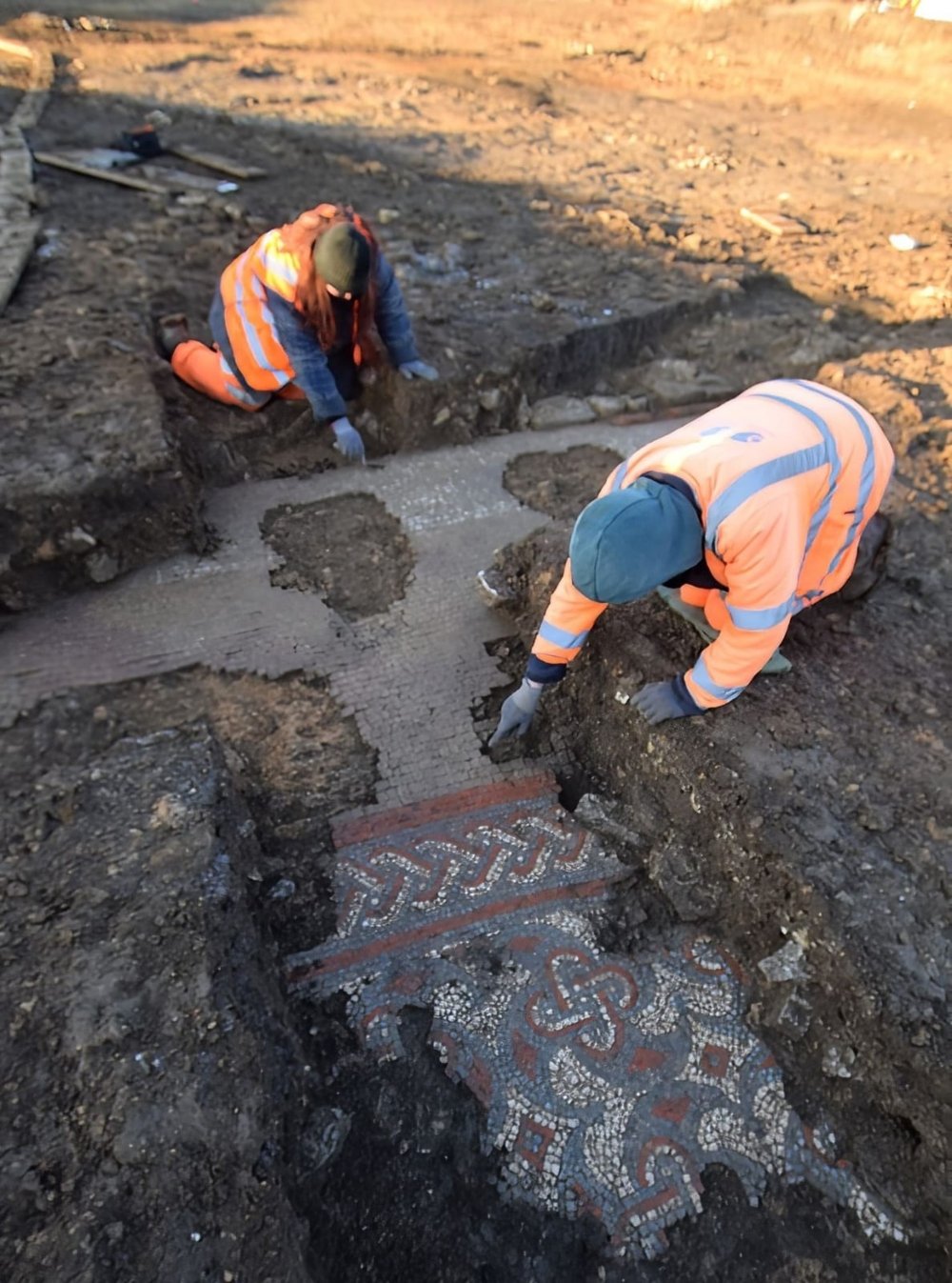
The construction of a new local supermarket has been delayed in one English town after it turns out the site was already occupied by an ancient Roman villa and bath house, complete with a well-preserved mosaic floor with “vibrant colors and intricate decorative patterns.”
During the preparations for a new branch of Aldi, according to the BBC, a team of archaeologists excavated the site on Warrington Road in Olney, Buckinghamshire as part of an exploration commissioned by developers Angle Property due to the area’s close proximity to another Roman site.
“Due to the site location we anticipated some notable Roman remains, but the discovery of this fantastic mosaic far exceeded those expectations,” said John Boothroyd, the senior project manager from Oxford Archaeology, in a statement. “To be able to preserve remains of this quality and importance is a brilliant outcome.”
His team described the uncovered mosaic as being in good condition with tiles in red, white, and blue that were particularly well-preserved around the borders. The mosaics expert David Neal has speculated that the design could the work of the Durobrivan group, a school hailing from the east Midlands.
Following consultation with Milton Keynes City Council and Historic England, it has been decided that the work will be preserved for the future in situ. Construction of the proposed Aldi will therefore go ahead with a special protective material placed over the mosaic to prevent further damage. The finds will also be recorded and eventually published, Angle Property has promised.
Other stone structures that were discovered a short distance away from the mosaic are thought to be cisterns used for water collection, which indicates the presence of a nearby bath house. It is believed that the ancient complex extends further under the already built-up areas of Warrington Road, which the team was not able to fully investigate.